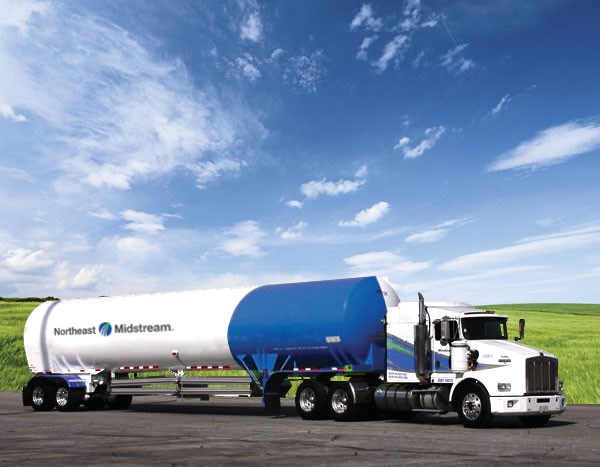A North Bay biomass advocacy group is questioning why Queen’s Park is preparing to subsidize the expansion of natural gas in Northern Ontario.
Dawn Lambe, executive director of the Biomass North Development Centre, is alarmed the province has introduced funding programs to support a group of north shore communities on Lake Superior who are pursuing a liquefied natural gas (LNG) network.
“It’s not that we think it’s a bad solution. It’s not...the optimal solution.”
Lambe was referring to the government’s $200 million Natural Gas Access Loan and $30 million Natural Gas Economic Development Grant, which were announced last May at the same time Queen’s Park introduced its sweeping Climate Change Action Plan.
She finds it “contradictory” to promote the expansion of a fossil fuel when the province has a strategy designed to slash the province’s carbon footprint.
Lambe recently sent letters to Premier Kathleen Wynne and five cabinet ministers in December, taking issue with a plan to “invest significant taxpayers’ dollars in an LNG scheme in Northern Ontario,” calling it “the wrong path to take.”
Instead of offering incentives for one particular technology, Lambe said the province should cast a wider net and look at a greater range of heating options.
Volatile energy prices and the distance from natural gas pipelines prompted the towns of Terrace Bay, Schreiber, Marathon, Manitouwadge and Wawa to partner with a Toronto energy producer, Northeast Midstream, to study the economics of trucking natural gas from a pipeline in Nipigon to proposed local distribution points in each community.
Lambe said it’s understandable that communities desperate to lower heating costs would latch onto LNG.
Though admittedly a cleaner heating fuel than oil or propane, Lambe said her group’s research on the use of LNG in other jurisdictions show the development and transportation costs won’t produce the savings that some people envision.
And she isn’t convinced LNG can stand on its own without “heavy subsidization from taxpayer money to make it feasible.”
Moreover, Lambe finds there’s also a public safety issue. Converting more buildings to use natural gas will put more tanker trucks containing flammable fuel on the road, she contends.
Though she doesn’t intend to lobby against the communities, Lambe advises them to look at alternatives and determine “what’s going to be the best long-term bang for their communities buck.”
Applying modern wood-based heating solutions, she said, will not only greatly reduce home heating costs but will rejuvenate the local forestry sector, create long-term jobs and generate value-added spinoffs.
There’s been talk for years of creating a region-wide bioeconomy, but efforts have stalled because of regulatory barriers and the absence of any real public policy promoting its use.
The lack of access to Crown fiber, inadequate transmission capacity, and the costs associated with trucking forest slash to energy plants to heat entire communities have been huge stumbling blocks.
With the government’s support to be a catalyst for change, Lambe said those challenges would be addressed with the roll-out of her group’s Northern Ontario Bioeconomy Strategy, beginning with the revealing of several demonstration projects across the North sometime in early 2017.
The 13 “sweet spot” projects were supposed to be introduced at their biomass conference in North Bay in October, but government funders postponed the announcement to a later date.
She believes setting up supply chains for these projects this can be accomplished faster than setting up an LNG network.




